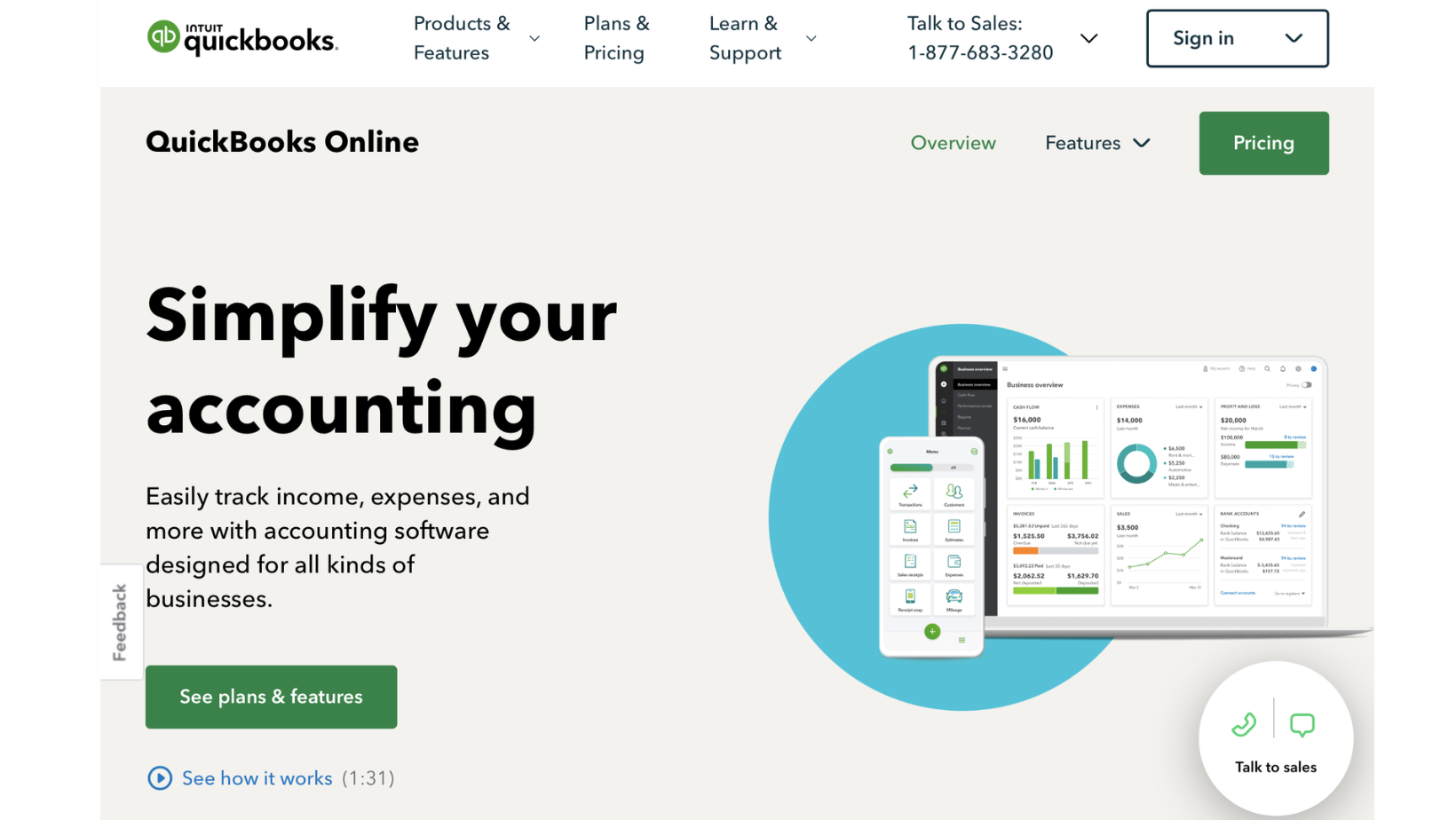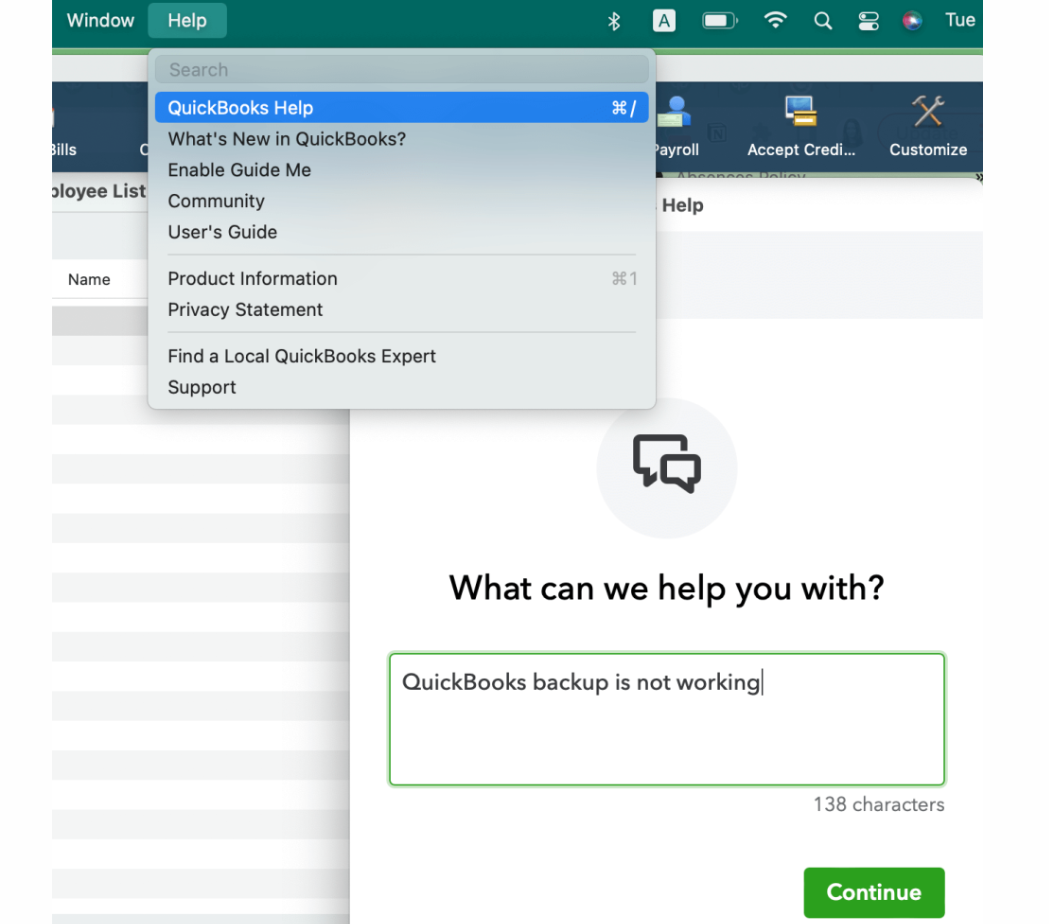Understanding QuickBooks Desktop Software
Overview of QuickBooks Desktop Software
QuickBooks Desktop Software, developed by Intuit, has become a staple in the world of accounting and finance, providing businesses with comprehensive tools to manage their financial tasks efficiently. The software’s journey began in the early 1980s when Scott Cook and Tom Proulx founded Intuit. The initial version of QuickBooks was released in 1983 as a basic accounting software for small businesses. Over the years, QuickBooks Desktop has evolved significantly, incorporating advanced features and adapting to the changing needs of businesses.
Brief History and Evolution of QuickBooks Desktop Software
The evolution of QuickBooks Desktop Software mirrors the technological advancements and shifts in the business landscape. In its early days, QuickBooks primarily focused on simplifying bookkeeping tasks for small businesses. As the software gained popularity, Intuit continuously updated and expanded its capabilities. The 1990s saw the introduction of more advanced features, such as payroll management and inventory tracking, making QuickBooks a comprehensive financial management solution.
The 21st century brought about major changes, with QuickBooks Desktop Software embracing cloud technology and offering online versions. This shift allowed businesses to access their financial data remotely and collaborate more effectively. Despite the growth of cloud-based solutions, QuickBooks Desktop has maintained its relevance, catering to users who prefer the traditional desktop experience and need robust functionality for complex financial tasks.
Key Features and Functionalities
QuickBooks Desktop Software boasts a wide array of features and functionalities designed to streamline financial processes. From basic tasks like invoicing and expense tracking to more complex functions such as payroll management and inventory tracking, the software provides a comprehensive suite of tools. Users can generate insightful reports, reconcile bank statements, and manage tax-related activities seamlessly. The software’s user-friendly interface and customizable dashboards contribute to its popularity among businesses of all sizes.
QuickBooks Desktop supports integration with third-party applications, allowing users to extend its capabilities and tailor the software to their specific needs. This adaptability has made QuickBooks a versatile solution that can cater to various industries and business models.
Versions and Editions Available
QuickBooks Desktop Software offers different versions and editions to cater to the diverse needs of businesses. The software is available in Pro, Premier, and Enterprise editions, each offering different levels of functionality and scalability. Pro is suitable for small businesses with basic accounting needs, while Premier adds industry-specific features. Enterprise is designed for larger businesses with advanced financial requirements and the need for robust user permissions.
Additionally, QuickBooks Desktop Software releases periodic updates and versions to stay current with tax regulations and industry standards. Users can choose the version that aligns with the size and complexity of their business, ensuring they have access to the right tools for efficient financial management.
Importance of QuickBooks in Business:
QuickBooks stands as a cornerstone in modern business management, serving as a comprehensive financial tool that streamlines various aspects of financial management. Its significance lies in its ability to simplify complex financial tasks, providing businesses with a user-friendly platform to manage their finances efficiently. From bookkeeping to financial reporting, QuickBooks plays a pivotal role in ensuring accurate and timely financial data, which is crucial for making informed business decisions.
How QuickBooks Enhances Financial Management:
QuickBooks excels in enhancing financial management through its robust features. One key aspect is automated bookkeeping, where transactions are recorded seamlessly, reducing the chances of errors associated with manual entry. The software also facilitates real-time tracking of income and expenses, offering a clear and up-to-date overview of the financial health of the business. Additionally, QuickBooks provides tools for invoicing, payroll management, and tax preparation, further simplifying financial processes and ensuring compliance with regulatory requirements.
Integration with Other Business Processes:
QuickBooks goes beyond mere financial management by seamlessly integrating with various other business processes. Integration with customer relationship management (CRM) systems, inventory management, and e-commerce platforms enables a holistic approach to business operations. This integration ensures that financial data is synchronized across different departments, enhancing overall efficiency and reducing the risk of discrepancies. The ability to connect with other software and applications streamlines workflows, allowing businesses to operate more cohesively.
Benefits for Small, Medium, and Large Enterprises:
QuickBooks caters to businesses of all sizes, offering tailored solutions to meet the unique needs of each. For small enterprises, it provides an accessible and cost-effective platform for managing finances without the need for extensive accounting expertise. Medium-sized businesses benefit from the scalability of QuickBooks, accommodating their growing needs as they expand. Large enterprises appreciate the robust features and customization options, allowing them to handle complex financial structures and large volumes of transactions.
The importance of QuickBooks in business is multifaceted. It not only simplifies financial management but also integrates seamlessly with various business processes, providing a comprehensive solution for businesses of all sizes. From accurate bookkeeping to facilitating better decision-making, QuickBooks stands as a valuable asset in today’s dynamic business landscape.
QuickBooks Desktop Software Support
The Role of Customer Support
In the realm of software usage, customer support plays a pivotal role in ensuring a seamless and efficient experience for users. QuickBooks Desktop Software Support, in particular, stands out as a key element in assisting users navigating the complexities of financial management. The importance of customer support lies in its ability to address user queries, troubleshoot issues, and offer guidance, ultimately enhancing the overall usability of the software. It acts as a lifeline for users, ensuring that they can maximize the benefits of QuickBooks Desktop Software.
QuickBooks Desktop Software Support encompasses various types of assistance to cater to the diverse needs of users. From addressing technical glitches to guiding optimal usage, the support system is designed to be comprehensive. This multifaceted approach ensures that users, regardless of their proficiency levels, can find the assistance they need to make the most of the software.
QuickBooks Desktop Software Support Channels
To accommodate diverse user preferences and situations, QuickBooks Desktop Software Support offers a range of channels for assistance. Users can opt for traditional methods such as phone support, where they can directly communicate with support agents. Live chat provides a real-time interaction platform, offering instant solutions. Email support is another avenue, allowing users to detail their concerns and receive responses at their convenience. Community forums facilitate peer-to-peer assistance, creating a collaborative environment. Additionally, knowledge-base articles serve as a self-help resource, providing users with detailed guides and solutions to common issues.
These varied support channels underline QuickBooks’ commitment to accessibility, recognizing that users may have different preferences when seeking assistance. Whether users prefer direct communication or self-help resources, the software support system is designed to cater to their needs.
Subscription Plans and Support Levels
Understanding the diverse requirements of businesses, QuickBooks Desktop Software Support offers different subscription plans, each with varying levels of support. An overview of these subscription plans provides users with the flexibility to choose the one that aligns with their specific needs and budget constraints. The differences between basic and premium support are delineated, offering users a clear understanding of the additional benefits that come with premium support.
Choosing the right support level for a business is a crucial decision. It involves considering factors such as the scale of operations, the complexity of financial processes, and the level of assistance required. By providing users with a choice in support levels, QuickBooks Desktop Software ensures that businesses can tailor their support experience to suit their unique circumstances. This strategic approach reflects the software’s commitment to offering personalized and effective support solutions for users across various business landscapes.
Common Issues and Solutions
Installation and Setup Problems
Installation and setup are crucial phases in deploying any software, and encountering issues during these processes is not uncommon. Users may face challenges installing the software on various operating systems, such as compatibility issues or missing dependencies. Configuration poses another hurdle, with users grappling with settings that may not align with their system requirements. Fortunately, a comprehensive guide addressing these installation and setup problems is essential. This section delves into troubleshooting steps for issues ranging from installation on different operating systems to resolving common setup errors, offering users a systematic approach to overcome these hurdles.
Data Migration and File Compatibility
The process of migrating data and ensuring file compatibility between different software versions can be intricate. Users may encounter challenges during data migration, risking data integrity and completeness. File compatibility issues are also prevalent when attempting to open files created in different versions of the software. This section provides insights into navigating these challenges, offering best practices for a seamless data migration experience. By understanding the intricacies of data migration and file compatibility, users can adopt strategies to mitigate risks and ensure a smooth transition between software versions.
Performance and Speed Optimization
Optimizing software performance is paramount for a smooth user experience. Users often face sluggish operation, and understanding the strategies for performance improvement is crucial. This section explores common reasons for slow operation, ranging from hardware limitations to inefficient configurations. Additionally, it provides users with practical tips for optimizing the performance of their software, enhancing efficiency and responsiveness. By addressing performance and speed optimization, users can maximize the benefits of the software while minimizing potential frustrations associated with slow operation.
Error Messages and Codes
Error messages and codes are inevitable aspects of software usage, and decoding them is vital for effective issue resolution. This section takes a deep dive into common error messages, providing users with insights into their meanings and possible causes. Understanding error codes and their implications empowers users to troubleshoot issues systematically. The step-by-step troubleshooting guide offered in this section equips users with the knowledge needed to resolve errors efficiently, ensuring a smoother and more reliable software experience. By addressing error messages and codes comprehensively, users can navigate challenges with confidence and maintain the stability of their software environment.
Advanced Troubleshooting Techniques
Remote Assistance and Troubleshooting Tools
Remote assistance is a critical aspect of QuickBooks support, enabling technicians to diagnose and resolve issues without being physically present. In QuickBooks, this functionality involves a collaborative effort between support professionals and users. The process typically includes sharing access to the user’s system, allowing the support team to view and control the software environment. This facilitates real-time issue identification and resolution.
Moreover, QuickBooks provides a suite of troubleshooting tools to enhance the support process. These tools are designed to pinpoint specific issues within the software, offering a systematic approach to problem-solving. Users can expect a comprehensive overview of these tools, gaining insights into their functionalities and application. Diagnostic tools play a pivotal role in conducting in-depth analyses of problems, aiding support professionals in identifying root causes and implementing effective solutions.
Third-Party Integration Issues
QuickBooks often interfaces with various third-party applications, enhancing its functionality and extending its capabilities. However, the integration process can sometimes lead to complications, resulting in performance issues or functionality disruptions. Troubleshooting third-party integration problems is a critical skill for QuickBooks support teams. This section delves into the intricacies of identifying and resolving issues related to external software connections.
Ensuring seamless integration is not only about addressing existing problems but also about adopting best practices to prevent future issues. Users will gain insights into optimizing the integration process, maintaining compatibility with other software, and implementing effective troubleshooting strategies. This knowledge is vital for users who rely on QuickBooks in conjunction with other applications to streamline their business operations.
Data Corruption and Recovery
Data is the lifeblood of any accounting system, and the occurrence of data corruption can have severe consequences. This section focuses on equipping users with the knowledge to recognize signs of data corruption within QuickBooks. Understanding these indicators is crucial for early intervention and preventing data loss.
Tips for Efficient QuickBooks Usage
Regular Software Updates and Maintenance
One crucial aspect of efficient QuickBooks usage is regular software updates and maintenance. Keeping QuickBooks up-to-date is essential for various reasons. First and foremost, updates often include bug fixes and security patches, ensuring the software operates smoothly and protects your financial data from potential threats. Moreover, updated versions may introduce new features and improvements, enhancing the overall user experience.
Performing regular software maintenance involves more than just updating the application. It includes routine checks for data accuracy, file optimization, and system compatibility. Businesses should establish a schedule for updates to minimize disruptions to their daily operations. By planning updates during non-peak hours or slower business periods, organizations can ensure that the process is seamless and does not interfere with critical tasks.
Employee Training and Skill Development
Efficient QuickBooks usage relies heavily on the proficiency of employees in navigating and utilizing the software. Employee training is crucial to ensure that users understand the various features and functionalities of QuickBooks. QuickBooks offers training programs and resources to help users become proficient in their roles. These programs cover basic functionalities, advanced features, and best practices for efficient financial management.
Continuous skill development is equally important. QuickBooks evolves, introducing new features and updates. To maximize software utilization, employees should engage in ongoing training programs that align with their roles. This ensures that users are well-equipped to leverage the full potential of QuickBooks, improving accuracy and efficiency in financial processes.
Utilizing Online Resources
Exploring online resources is another valuable strategy for efficient QuickBooks usage. Online forums and communities provide platforms for users to share experiences, ask questions, and gain insights into common challenges. Engaging in these communities allows businesses to tap into a collective knowledge base, finding solutions to problems and discovering new ways to optimize their QuickBooks usage.
Leveraging video tutorials and webinars is another effective method. QuickBooks often provides instructional videos that guide users through specific tasks or highlight new features. Webinars offer a more interactive experience, allowing participants to ask questions and receive real-time support.
Following QuickBooks blogs and social media channels is essential for staying updated on the latest developments. QuickBooks frequently releases updates, and being aware of these changes ensures that businesses can adapt their processes accordingly. Blogs and social media channels often share tips, tricks, and best practices, enriching the user experience and helping businesses make the most of their QuickBooks investment.
Future Developments and Emerging Trends
QuickBooks Desktop Software Evolution
QuickBooks Desktop has undergone significant evolution in recent times, marked by a series of updates and the introduction of new features. The software has continually adapted to meet the changing needs of its users and the dynamic business landscape. Recent updates have focused on improving user interface, enhancing data security, and providing more advanced reporting capabilities. These changes not only reflect the commitment to user satisfaction but also indicate the software’s dedication to staying relevant in an ever-evolving market.
Looking ahead, QuickBooks is poised for further innovation with anticipated developments in future releases. The company recognizes the importance of staying ahead of the curve and is likely to introduce features that align with emerging industry trends. This may include more robust integration with other business tools, improved scalability for growing businesses, and increased customization options to cater to diverse user requirements. QuickBooks aims to remain a versatile and indispensable tool for businesses of all sizes.
In adapting to industry trends, QuickBooks is strategically positioning itself to meet the rising demand for cloud-based solutions and mobile accessibility. The software is expected to enhance its cloud capabilities, making it easier for users to access their financial data from anywhere and collaborate in real-time. As the business landscape continues to evolve, QuickBooks is committed to evolving with it, ensuring that users have the tools they need to navigate the complexities of modern financial management.
Artificial Intelligence and Automation in QuickBooks Support
Artificial Intelligence (AI) is playing an increasingly prominent role in QuickBooks support, revolutionizing the troubleshooting and customer assistance experience. The integration of AI in support services aims to enhance the efficiency and effectiveness of issue resolution. QuickBooks is leveraging AI algorithms to analyze and diagnose problems, providing users with faster and more accurate solutions to their queries.
Automation has become a key focus in QuickBooks support, streamlining routine tasks and freeing up human resources for more complex and strategic endeavors. Repetitive support tasks, such as data entry, basic issue resolutions, and routine inquiries, are being automated to ensure a quicker response time and allow support agents to focus on more intricate challenges. This not only accelerates issue resolution but also contributes to a more satisfying customer experience.
The impact of AI on customer experience within the QuickBooks support ecosystem is profound. With AI-driven support, users can expect personalized assistance, predictive issue resolution, and proactive insights into optimizing their use of the software. As QuickBooks continues to invest in AI and automation, the support landscape is evolving towards a more efficient, responsive, and user-centric model, ultimately contributing to greater customer satisfaction and loyalty.
Conclusion
QuickBooks Desktop Software Support is a vital component in ensuring the smooth operation of this widely used accounting tool. Users should be aware of the various support channels available and understand how to troubleshoot common issues. By following best practices, staying informed about updates, and leveraging available resources, businesses can optimize their use of QuickBooks for efficient financial management. As QuickBooks continues to evolve, staying abreast of emerging trends and incorporating new features will be key to maximizing the software’s potential.
System requirements can vary between versions, but generally include specifications for operating systems, processor speed, RAM, and disk space. Refer to the official Intuit website for the specific requirements for your version.
QuickBooks Desktop licensing typically allows installation on one desktop and one laptop for a single-user license. Multi-user licenses are available for businesses requiring installation on multiple computers for concurrent access.
To upgrade to the latest version, you can purchase a new license or a subscription. Follow the instructions provided by Intuit for upgrading, and ensure that your data is backed up before making any updates.
QuickBooks Desktop is primarily designed for Windows, but there is a separate version for Mac. Ensure you choose the correct version for your operating system.
QuickBooks does not have a built-in password recovery feature. You may need to follow the password recovery process on the Intuit website or contact customer support for assistance.
QuickBooks Desktop is installed on your computer and offers more advanced features. QuickBooks Online is cloud-based and provides anytime, anywhere access with fewer features than the desktop version.
Yes, QuickBooks Desktop supports data import from various accounting software. Refer to the official documentation or support resources for specific instructions based on your current software.
Reconciling accounts in QuickBooks Desktop involves comparing your bank or credit card statements with your QuickBooks transactions. Follow the reconciliation process outlined in the software or consult the support resources for guidance.








